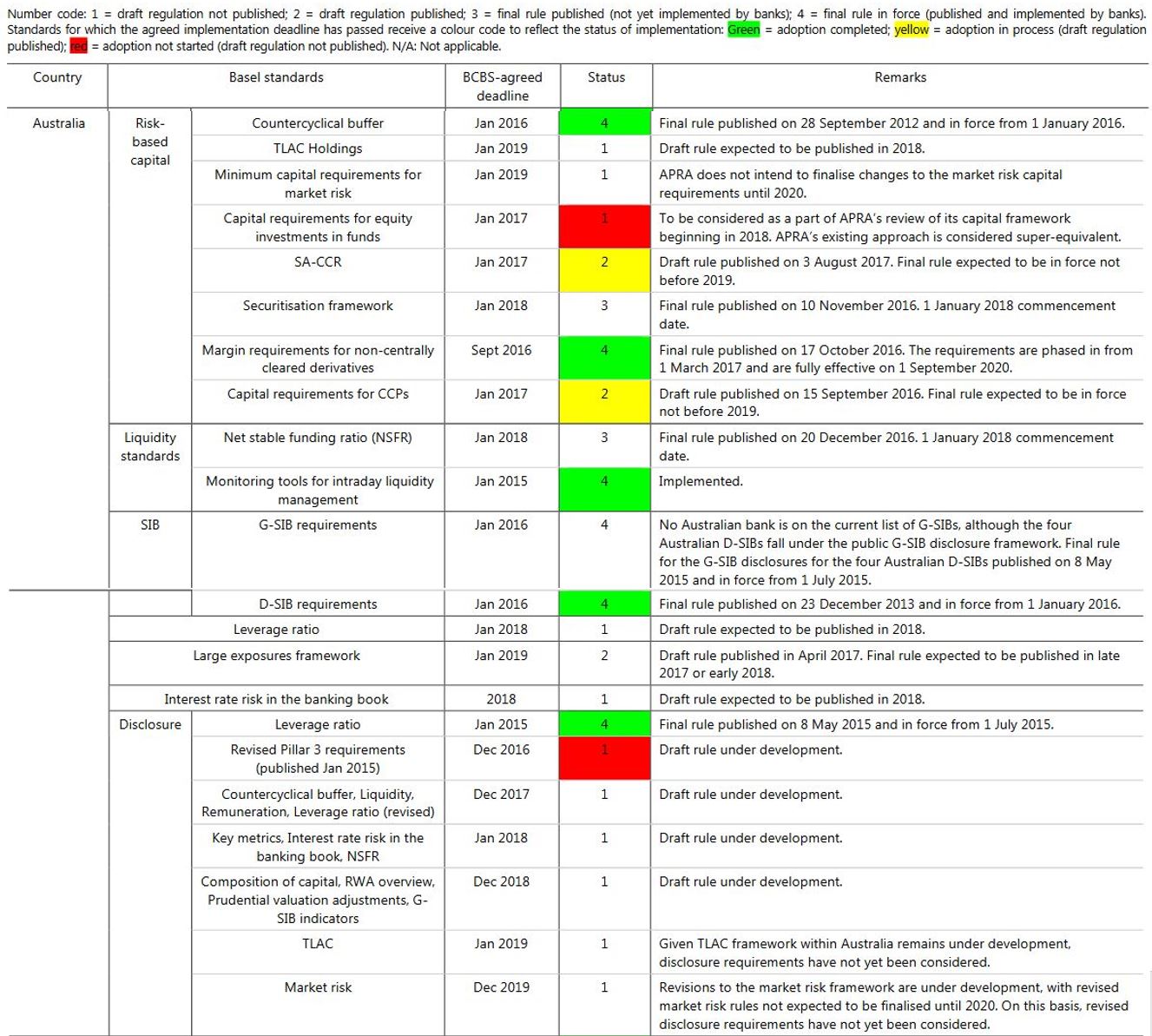The Basel Committee published its latest status report on Basel III implementation to end-September 2017 – the 13th progress report. This includes a status report on Australia:
 There are areas (in red) where the deadline has passed, and as yet plans are not announced. Many other countries have red marks, but it is worth noting the Euro area is ahead of many other regions. Disclose is a major gap in Australia according to the committee.
There are areas (in red) where the deadline has passed, and as yet plans are not announced. Many other countries have red marks, but it is worth noting the Euro area is ahead of many other regions. Disclose is a major gap in Australia according to the committee.
APRA provided comments on the status.
It also, once again, highlights the complexity in the Basel framework. Here the overall Basel Committee statement summary.
As of end-September 2017, all 27 member jurisdictions have final risk-based capital rules, LCR regulations and capital conservation buffers in force. 26 member jurisdictions have issued final rules for the countercyclical capital buffers and for domestic systemically important banks (D-SIBs) frameworks.
With regard to the global systemically important banks (G-SIBs) framework, all members that are home jurisdictions to G-SIBs have final rules in force. 21 member jurisdictions have issued final or draft rules for margin requirements for non-centrally cleared derivatives and 22 have issued final or draft rules for monitoring tools for intraday liquidity management.
With respect to the standards whose agreed implementation date passed at the start of 2017, 20 member jurisdictions have issued final or draft rules of the revised Pillar 3 framework (as published in January 2015, ie at the end of the first phase of review), 19 have issued final or draft rules of the standardised approach for measuring counterparty credit risk (SA-CCR) and capital requirements for equity investments in funds, and 18 have issued final or draft rules of capital requirements for bank exposures to central counterparties (CCPs).
Members are now striving to implement other Basel III standards. While some members reported challenges in doing so, overall progress is observed since the previous progress report (as of end-March 2017) in the implementation of the interest rate risk in the banking book (IRRBB), the net stable funding ratio (NSFR), and the large exposures framework. Members are also working on or turning to the implementation of TLAC holdings, the revised market risk framework, and the leverage ratio. The Committee will keep on monitoring closely the implementation of these standards so as to keep the momentum in implementing the comprehensive set of the Committee’s post-crisis reforms.
Regarding the consistency of regulatory implementation, the Committee has published its assessment reports on all 27 members regarding their implementation of Basel risk-based capital and LCR standards.
